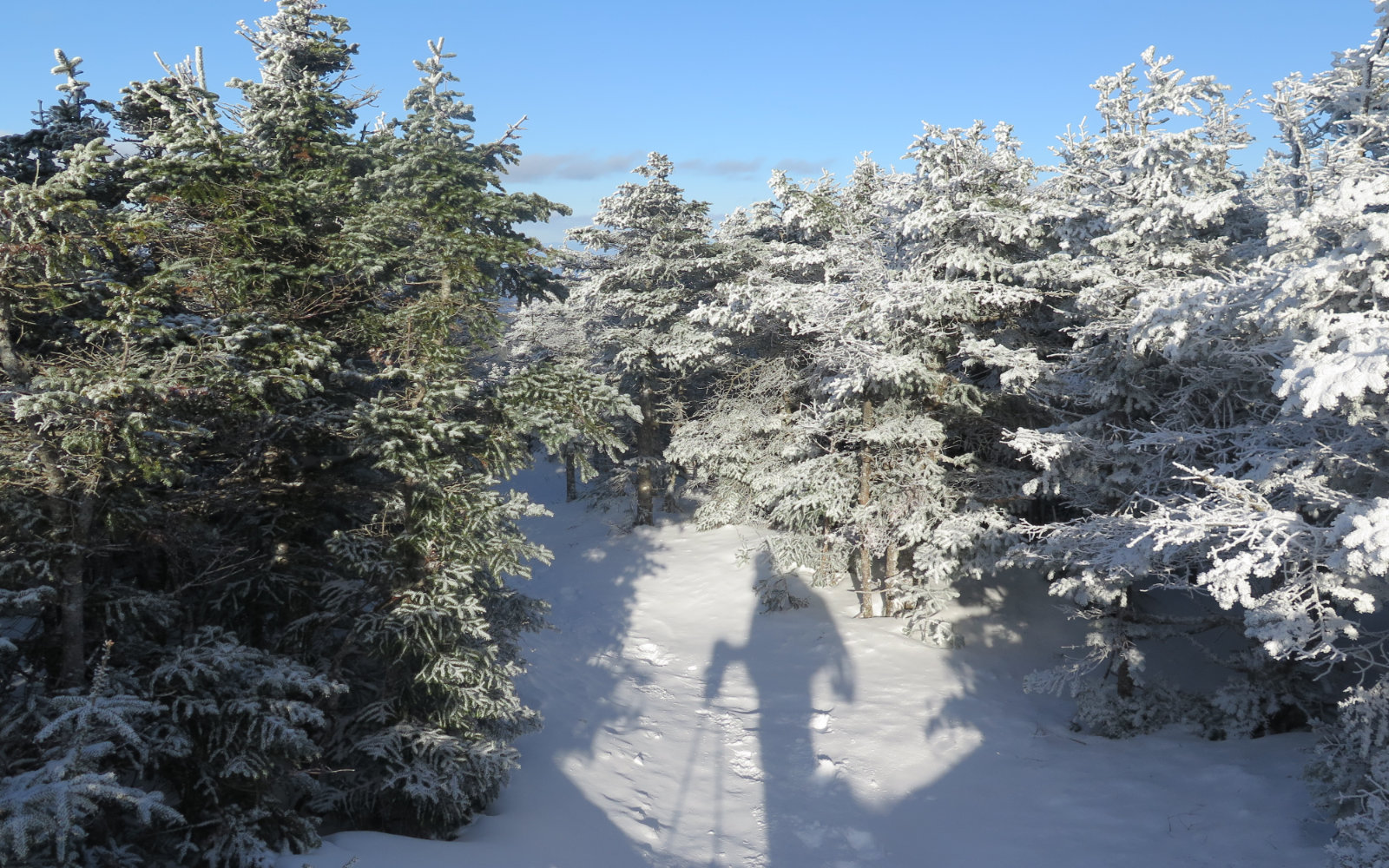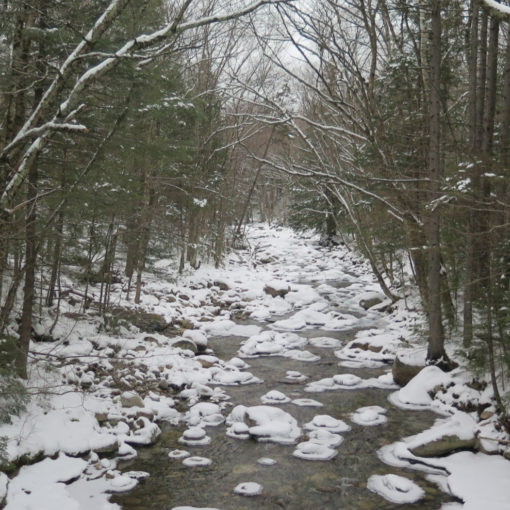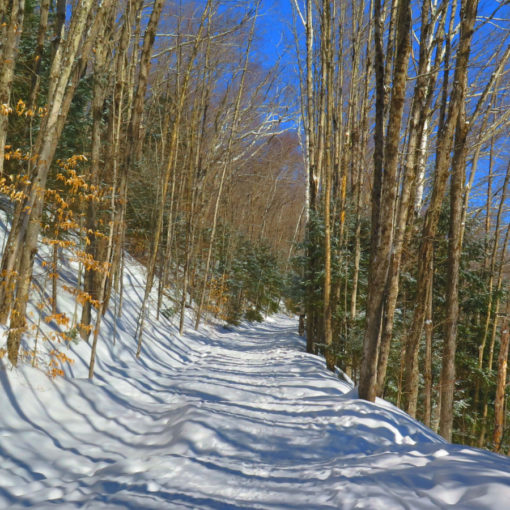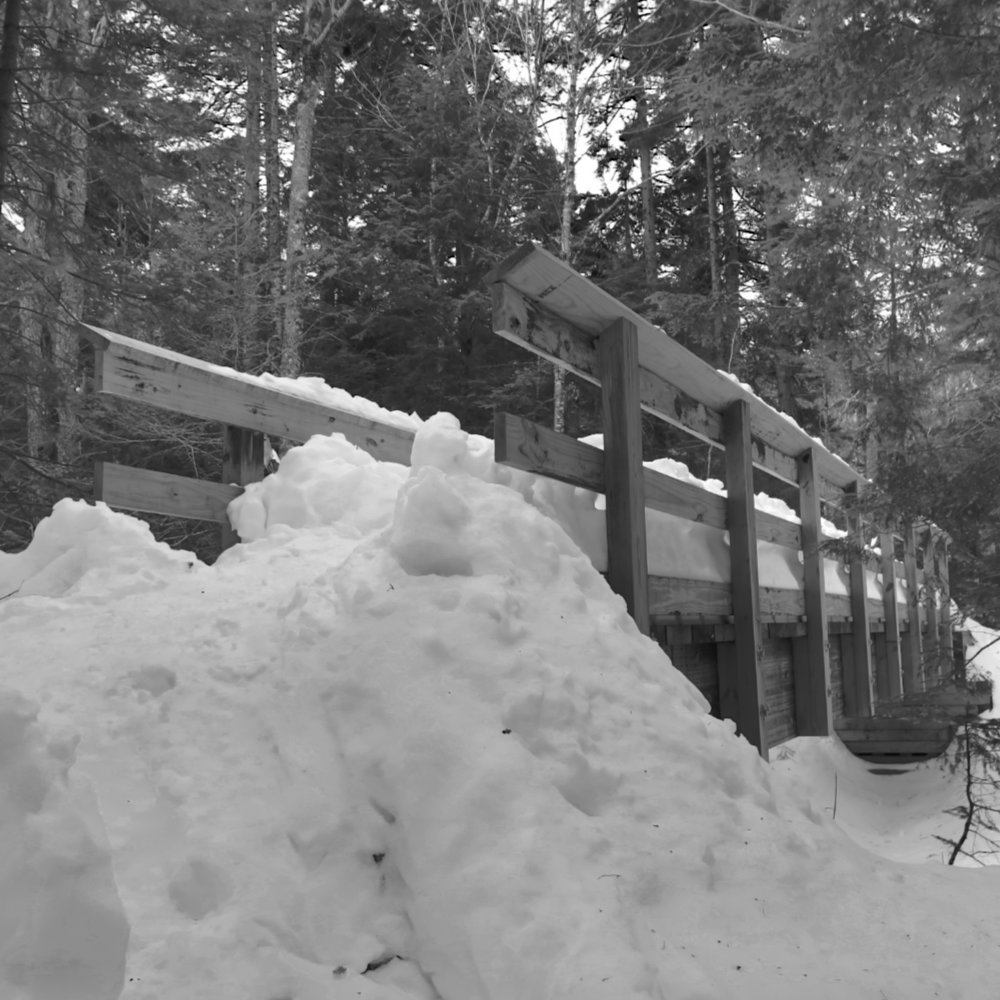You’d think, by perusing the websites of the various gear manufacturers, that I was terribly old school — I love hardshell pants in the wintertime, even as it seems soft-shell pants are all the rage. Ever since I went to MIT Winter School as an undergrad (and on that, if you have the chance to go, grab it!) they’re my first choice. They’re a versatile cornerstone of my dress system. Heavier than a warm weather rain pant (like the ubiquitous Marmot PreCip pants) they’re meant to provide a robust defense against harsh weather.
A disclaimer: No pecuniary interest behind this post!
First things first: Outdoor Research is not paying me to write this. Neither is anyone else. I’m getting no compensation of any kind for this review. I bought these last season, have used them extensively throughout the Whites, and so everything you’re reading is based on my own first-hand experience. (No skimping on the research by cribbing from Amazon reviews here!) This is the straight dope, as I’ve come to know it. Second, your mileage may vary. I’m just some guy, giving his opinion, and as they say, “on the internet, no-one knows you’re really a dog.” Your experience with something could be completely different from mine. If you’re not sure about something, feel free to drop me a note, or dig a little deeper into the subject on your own. Knowledge is power. And that goes for corrections, too! If you know something that I don’t, or have omitted, let me know. None of us is as smart as all of us.
So how do they compare to springtime rain pants?
Off the top, the first thing I notice is that they are noticeably heavier than my rain pants. To quantify this, I hauled out my kitchen scale, and weighed the two. My Marmot PreCip pants, with full length zips, comes in at a svelte 11 ounces. The Outdoor Research Furio pants, also with full length zips, tips the scales at a pound and a half — more than twice as heavy. Now, granted, I got the matching suspenders, but let’s face it, a couple of elastic straps and some velcro aren’t the heavy part.
Why is this? Well, it’s a tale of two materials and two constructions. The PreCip pants are basically a single-thickness of fabric throughout, with Marmot’s waterproof-breathable treatment applied. Works great for its intended application. In warm weather, they shed water like a champ, and they weigh very little in the pack when not needed.
The Furio pants are made of Gore-Tex Paclite, and depending on where, they’re either 2 or 3 layer fabric. Overall, they’re the lighter material, but in the seat and knees, they’re the heavier. Down at the cuffs, there’s a large patch of very heavy fabric reinforcement that comes very high up the shin, almost to the knee. It wraps all the way around the inside of the leg, providing good coverage against the occasional wayward crampon, or even tree trunks in the event you’re climbing over a blow-down.
Feeling the two, one is definitely thicker than the other. The PreCip pants feel thin and lightweight, yet sturdy enough to serve for years in their intended purpose. Wearing my rain pants, I’ve never worried about their integrity or their breathability. Indeed, I’ve had hikes where I’ve thrown them over already wet pants, and found them dry by the time I’ve gotten back to the car. That being said, they’re very much a warm weather option. In a pinch, they’ll do in winter, but I’d really just want them for getting back to the trailhead, not starting out from it. They’d be my backup plan at most.
In contrast, with the Furio pants on, I upgrade my protection from “happily weathering a downpour” firmly into “showing a typhoon who’s the boss.” Picking them up, they just feel that much more robust. Right off the top, they reassure, but do so without feeling like you’re wearing a brick wall.
And the creature comforts?
In the hand, the fabric is substantial, without question. At the same time, it feels pleasant, and oddly, almost soft to the touch. The outside face is smooth, and can shed snow well. Outdoor Research has cleverly designed the stitching so while you know it’s there, at the same time, it feels unobtrusive. It doesn’t snag on everything.
Lift up the cuffs, or more preferably, unzip the side, and you’ll find a powder skirt that can be opened via velcro. These blouse over your boots and snug with elastic, so when you inevitably posthole, your legs don’t get iced. (And there are snaps at both ends for backup.) The zip goes right the way up, and yes, you can part the waistband, allowing snow-free entry and exit with your boots on should you need. Two zip sliders afford access from bottom or top — the latter being very useful for accessing pockets, or ventilating. The bottom of the zip has a snap for added security.
The cuffs themselves can also be snugged up with an internal elastic, and the tail end is routed smartly inside so it doesn’t snag on things. Besides that, there are two grommets on either side, so if your cuffs are still riding up despite the elastic (not at all a problem I’ve encountered) you can tie some p-cord, routed under your boot. Up top, there’s an integrated belt, so your pants don’t fall down. Suspenders can attach via two loops at the front, one in the back.
But nothing’s perfect, right?
Now, the bugaboos. The first is with ventilating. They’re heavy pants, and so I like to unzip the sides when I’m really pushing hard. The waistband does velcro so it stays intact while ventilating, but OR only put one velcro tab there. In the past, I had a pair of shells from Mountain Hardwear and their approach was to have two tabs, one on the inside and one on the outside, basically making a sandwich. In this way, it was very hard for the waist to get inadvertently unfastened, while remaining easy to open when desired. It’s not been a problem for me yet, but in my opinion, this is an oversight, and usually Outdoor Research is all about these kinds of details. I hope this isn’t mindless cost-cutting.
Next one is the pocket. Singular. It’s on the thigh, which does make it handy (I prefer to keep my map there) but that’s the one and only pocket you get on this, your outer, lower layer. There’s an argument to be made that pockets can gather snow and other wet stuff. And that’s a fine argument. But personally, I’d prefer having a second pocket somewhere. It just strikes me that one pocket is a paltry offering, and again, it feels like cost-cutting that’s a bit needless.
How do they perform?
So what are they like, from a practical standpoint? Getting in and out has been a breeze. It sounds like a silly thing, but no kidding, without opening the side zips a significant amount, my Mountain Hardwear shells required a Herculean effort. The Furio pants? About as easy as you’d want, done the obvious way. The insides are just on the right side of slippery, which greatly facilitates donning and doffing. When OR sweats these details, they do it well, and here, they have.
In use, they don’t feel like much of anything — they certainly don’t get in the way at all, and I can’t say I’ve ever given much thought to them. In my book, that’s high praise. The zippers on the sides are of the waterproof variety, so they move a little more stiffly. It’s not been a problem. The slider at the bottom just has the usual metal pull, which is smart (it doesn’t get caught on things as you walk) and the one at the top has an additional loop of cord, so ventilating with gloves on is easily managed.
I typically wear them over my North Face Paramount convertible pants, and those over a baselayer. So far, I’ve been as warm as I’ve wanted down to the low single digits. Mt Washington in windy, whiteout conditions? Did me well. Cannon Mountain in the fog, temps hovering near zero? Yep! All three Bonds in a day? You bet. What about chest-deep snow on Mt Jackson? No problems at all!
There’s enough room that if I wanted to wear a fluff layer, like some heavy fleece or something, I can do that very easily and still not feel constricted. Moving around is very comfortable. I can high-step, kneel, crouch, crawl… anything you’d expect on the trail, and they don’t bind up anywhere. And as far as protection? See my previous comment about holding back a typhoon. They totally work as advertised at keeping water out, while letting sweat vapor escape. Not 100% perfect, but in winter, you’re sweating less anyway.
If I had a gripe, it would be they’re available in any color you want, as long as it’s black. I mean, it’s a good color, stands out against snow, looks great with everything, and goes from day on the trail to night on the town in the bat of an eyelash. Seriously, why are we all expected to be ninjas when we’re out playing in the woods? OR does make a concession by stitching their logo in medium grey. Go team. Note to manufacturers everywhere, more colors look better in photos!
So wrapping things up…
These are the shells I’ve worn for about a season now. They’ve done me right, they’re going strong, I expect them to continue to do so for awhile yet, and I feel really comfortable recommending them. If OR keeps making them, I’ll get another pair when I finally wear these out in a few years. You can find them on Outdoor Research’s website, or other outfitters on the web. Sizing is “about right” — most medium size garments fit me pretty well, and these are no exception. They’re cut appropriately to fit over layers, and for me, they’re pretty much in the Goldilocks zone: neither too baggy, nor too tight. I can pull them on over my layers without any issue, and all the while, they’re not snagging on things.
Leave a comment, ask a question… if you’ve got a pair of other shells that’s done you better, let me and everyone else know.
And as always, stay safe out there.
If you enjoy reading these posts, please subscribe — stay in the loop! Your email will only be used to alert you of new posts — typically 1-2 times per week. I will not use or share your email for any other purpose without your express permission.





4 thoughts on “Gear Review: Outdoor Research Furio Hardshell Pants”
Hey man,
So are these your go-to’s for every winter hike? I typically wear soft-shell climbing pants because I run wicked hot and want the breathability, but they’d almost certainly get drenched if there was any precip. So these hard-shells are pretty breathable then, it seems?
Brendan
I run hot also, but I overcome the breathability issues by just ventilating by opening the side zips as needed. I’ll open them to just above the knees, which makes for a foot long opening — you can’t get much better ventilation than that. If it’s raining, then it’s obviously a toss-up, but then again, at that point, things are going to be as they will be, and you won’t have much say, regardless. The one caveat is that you have to remember that you opened the sides if you’re going to do any planned glissading or other such mucking around. Otherwise, the vents will outright shovel snow into your inner layers wholesale. On a really nice day in mid-springtime, this isn’t so bad. Middle of February, not so much!
To answer your opener, yes, they’re my “daily drivers” starting around the point where I meaningfully switch over from spikes to snowshoes. I figure around then, the likelihood that I’ll be postholing or something is pretty good, and for that, you want more robust protection if you’re going to stay dry. And at a similar point in the springtime, I’ll transition out of them again. As I mentioned, I normally only wear a base layer and a pair of convertible hiking pants underneath, so my lower half is usually fairly comfortable. I might vent about 1/3 of the time, and then usually I’ve either over-dressed at my car, or it’s one of those days when the weather warms up significantly throughout the day.
Especially in the wintertime, squalls can happen on a dime, conditions are infinitely more variable than in the warmer months, and the pains and perils of under-dressing for the weather are more dire. I’d rather deal with the inconvenience of ventilating than deal with the inconvenience of a deadly cold weather injury. *grin*
Yeah I totally understand. I’m super conservative when it comes to winter up here and I generally go overkill with layers. I definitely want to get a nicer pair of hardshells beyond my full zip rain shells, because I can definitely see the utility and peace of mind they provide. I’ll definitely consider these for the end of the season sales or with my REI dividend. Nice review!
I know finances are always something we have to consider. In terms of peace of mind, these have been great, and to me, that’s certainly worth some coin. You know how the tree branches are that much closer to us when we’re hiking on several feet of snow, and they can be savage sometimes. These have stood up to the onslaught very nicely indeed. I’d definitely consider them, and if you can find a good price, grab ’em.
Cheers!